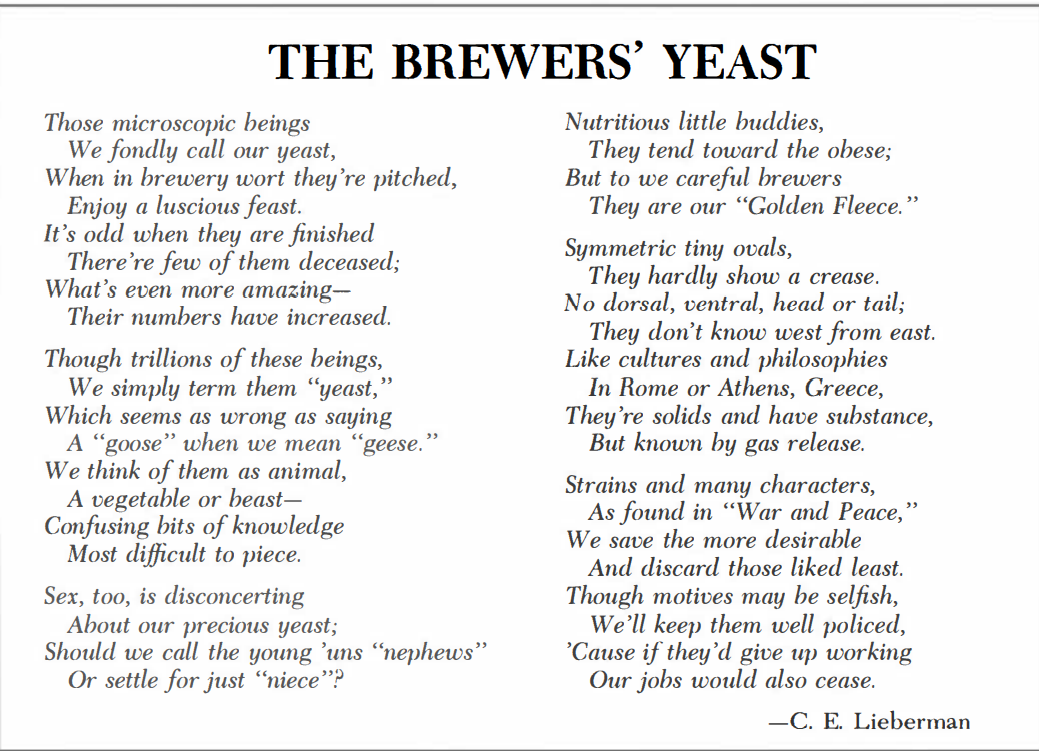Technical Paper | Reading Time 4 minutes
Genetically Engineered in the Brewing Space – A review of Terminology, Science and Regulation
Genetic Engineering has been a tool used in many different areas of commercial agriculture from corn to papaya, since the early 1980s. Although this gene-editing tool has been near ubiquitous in agriculture (at least in the United States), there is often much confusion and complexity surrounding this topic. What does genetic engineering mean? How is this different from genetic modification? Who is using genetic engineering as a tool?
Genetic engineering and genetic modification are often used interchangeably; however, there are some subtle differences and cross over. Broadly speaking, genetic modification can encompass both the use of biotechnology tools and breeding (or mating) techniques, which theoretically can occur in nature. These latter methods are considered classical techniques and importantly, they lack the distinction of using biotechnology incorporating transgenic modifications. The use of modern biotechnology methods (CRISPR, homologous recombination) are technically considered genetic engineering in scientific communities.
Regulatory-wise, however, the distinction between genetic modification and genetic engineering becomes further blurred with different regulatory agencies basing their definition of GMO on whether a cisgenic (same species) or transgenic modification occurred. Some regulatory bodies consider any use of recombinant DNA as a genetic modification; whereas, in the United States and Canada, these changes specifically refer to transgenic modifications with the phrase biotechnology used. As a general rule of thumb, it is helpful to consider specificity where genetic engineering falls under the umbrella of genetic modification; however, the specificity of the word genetic engineering very much refers to the use of modern biotechnology techniques that involve recombinant DNA, which could not occur in nature.
Genetic engineering is not a new concept to the brewing industry – in fact yeast genetics was a topic being discussed in the early 1950s – near the time of Dr. Rosalind Franklin’s discovery of the DNA structure. But it wasn’t until 1994 that the brewing industry saw the first commercially available brewing yeast. Since then, with the advent of modern bioengineering techniques (CRISPR/Cas 9, homologous recombination), the brewing industry has seen the rise of commercial brewing Saccharomyces cerevisiae strains that reduce diacetyl, increase hop aroma, and produce lactic acid.
While these strains present obvious flavor benefits, they also offer potential energy and cost savings in the form of reduced fermentation time, improved final volume yields, and labor savings – thus overall improving production time. Scientists look to genetic engineering to help solve complex issues – this is especially true in barley breeding where disease and drought resistance has been extensively studied using genetic engineering. More recently, exploration into the hop genome using genetic engineering techniques, will allow researchers to understand and later improve disease resistance (such as resistance to downy mildew), and resistance to heat stress. One driving connection between genetic engineering research in hops, barely, and indeed, yeasts, has been this sustainability aspect. With climate becoming less predictable, the use of genetic engineering can be considered a tool to help alleviate climate and energy stressors.
We partnered with Omega Yeast to explore this idea of genetic engineering as a sustainability tool, as well as provide historical context, definitions to these concepts, and discuss regulation within the United States.
In this paper, published by the Master Brewers Association of the Americas, we aim to:
- explain the complexities surrounding the term genetic modification
- clarify what genetic engineering is
- provide definitions to terms such as transgenic, cisgenic, and recombinant DNA
- give an overview of the regulation within the United States (more specifically)
- offer why genetic engineering is considered a sustainable tool that the brewing industry can use to cut down on production costs while at the same time offering flavor benefits
In the conclusion of the paper, we note that in 1990 Charles Liberman took to the task of addressing the persistent challenges the brewing industry faced (notably effective CO2 utilization and yeast management). Not neglecting the role of genetic engineering, he wrote of yeast as the “perfect employee”:

Lieberman, C. Persistent Challenges. MBAA Technical Quaterly, 27 (1) :27–32 1990.
Published Apr 11, 2023 | Updated Jan 15, 2024
Related articles
Need specific information?
Talk to an expert